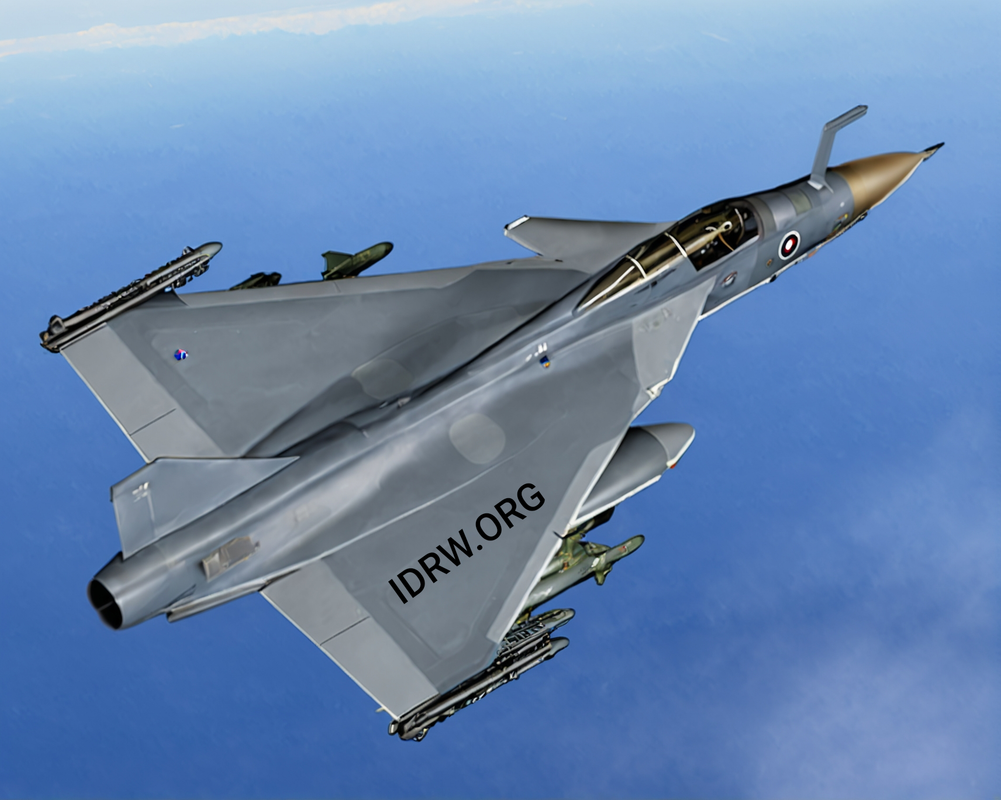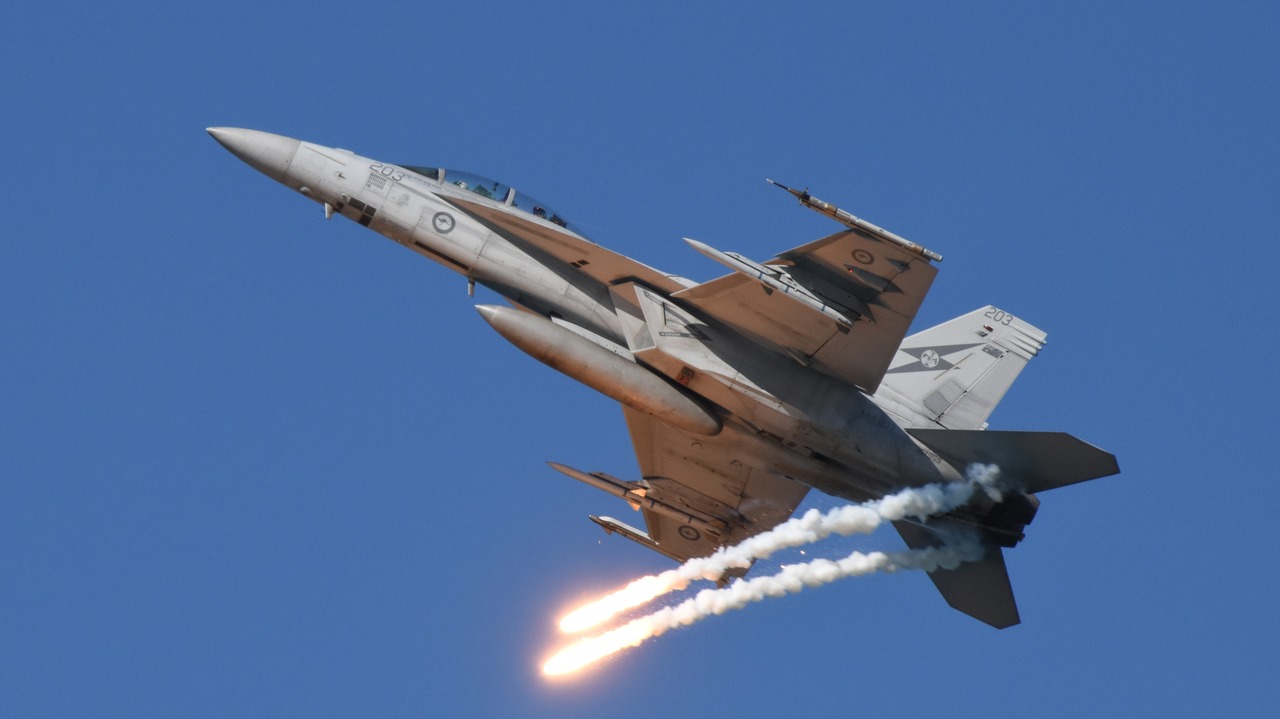AFI
SOURCE: AFI


As India continues to modernize its armed forces and bolster indigenous defence production, 2025 is poised to be a pivotal year for the defence sector. Key programs and policy initiatives are set to shape the country’s strategic and operational capabilities. Here are the top five things expected from India’s defence sector in 2025:
1. First Prototype of the Tejas MkII Rolls Out
Continue readingSOURCE: AFI


The year 2024 was momentous for India’s defence sector, marking significant milestones that enhanced the country’s security and technological capabilities. From new acquisitions to policy shifts, India took decisive steps toward strengthening its armed forces. Here are the top five defence developments in India in 2024:
1. First flight of Tejas Mk1A
In a major boost to indigenous defence manufacturing, the Indian Air Force began the induction of the Tejas Mk1A fighter jets, produced by Hindustan Aeronautics Limited (HAL). Featuring upgraded avionics, AESA radar, and enhanced weapons integration capabilities, the Tejas Mk1A represents a leap forward in India’s pursuit of self-reliance in fighter aircraft. The induction marks the beginning of a phased rollout of 83 jets ordered under a ?46,898 crore contract.
Continue readingSOURCE: AFI


In a recent incident that underscores the perils of friendly fire, a U.S. Navy F/A-18F Super Hornet, operating from the USS Harry S. Truman, was mistakenly shot down over the Red Sea. Both aircrew members ejected safely and were later rescued. This event is a stark reminder of the complexities of modern warfare and the need for robust systems to prevent such occurrences. The incident echoes a similar mishap within the Indian Air Force (IAF) in 2019, emphasizing the urgency for India to develop integrated systems to mitigate the risks of friendly fire.
The U.S. Navy’s friendly fire incident involved a guided-missile cruiser, the USS Gettysburg, mistakenly firing on the Super Hornet. The aircraft was part of operations aimed at countering Houthi rebel activities in the region. While the pilots were fortunate to be rescued with minor injuries, the incident raises questions about the identification, communication, and engagement protocols during complex operations.
Continue readingSOURCE: AFI


As Bangalore gears up for the Aero India 2025 airshow in February, the stage is set for a high-profile display of military prowess and technological advancement from both Russia and the United States. Media reports suggest an eager anticipation from Russia to showcase their fifth-generation Su-57 stealth fighter, following a similar strategy from the U.S. who brought the F-35A to the previous edition in 2023. This event could play a pivotal role in shaping India’s decisions regarding its future fighter jet program.
The Russian Su-57, also known by its NATO reporting name “Felon”, represents Russia’s answer to modern aerial combat demands. With its advanced stealth capabilities, super-maneuverability, and integrated modular avionics, the Su-57 is designed to rival the best in the world, including the American F-22 and F-35. Russian eagerness to display this aircraft at Aero India 2025 indicates a strong intent to rekindle or perhaps deepen defense ties with India, particularly in light of India’s ongoing quest for a fifth-generation fighter jet.
Continue readingSOURCE: AFI


In a significant stride towards enhancing the operational capabilities of the Indian Air Force (IAF), the Defence Metallurgical Research Laboratory (DMRL) and Hindustan Aeronautics Limited (HAL) at its Koraput facility have successfully extended the service life of the AL-31FP engine from 2,000 to 2,500 hours. Further research is underway with the ambitious goal of pushing this limit to 3,000 hours, marking a potential 50% increase over the original engine life. This article explores the implications and methodologies behind this achievement.
The AL-31FP is the heart of the IAF’s Sukhoi Su-30MKI fleet, one of the most formidable aircraft in its arsenal. Originally designed by the Russian Lyulka Design Bureau (now NPO Saturn), these engines are manufactured under license in India by HAL, showcasing an important aspect of the Indo-Russian defense collaboration.
Continue readingSOURCE: AFI


A recent war simulation conducted by a prominent US think tank projects a potentially prolonged conflict between India and China, centering around their contentious border in Ladakh and Arunachal Pradesh. The simulation suggests that if China initiates hostilities with the aim of a quick territorial gain, the conflict could escalate into a decade-long struggle unless China withdraws from the captured Indian territories.
China, leveraging its military might, is expected to launch a swift offensive to alter the border in its favor, reminiscent of the 1962 Sino-Indian War. The People’s Liberation Army (PLA) would aim for a short, decisive conflict to assert dominance in the region.
Continue readingSOURCE: AFI


In an era where information warfare and intelligence gathering are pivotal to national security, the Research and Analysis Wing (R&AW) of India has reportedly deployed its advanced Signals Intelligence (SIGINT) system, known as GB8002, to keep a vigilant eye on the activities in Bhutan and Bangladesh. This strategic move underscores India’s commitment to safeguarding its national interests and maintaining stability in its neighborhood.
The GB8002 system is an intricate network of electronic surveillance and intelligence-gathering capabilities, focusing on intercepting and analyzing signals for military, diplomatic, and strategic intelligence. This system is particularly adept at Signals Intelligence, which includes both Electronic Intelligence (ELINT) for understanding radar and other electronic emissions, and Communications Intelligence (COMINT) for intercepting and decoding communications.
Continue readingSOURCE: AFI


The Indian Air Force’s (IAF) quest for a robust, modern fighter jet fleet has been a topic of intense discussion, particularly with regards to the Tejas MkII. While officially designed as a 4.5 generation fighter, a significant portion of the defense community on X has argued that the Tejas MkII should have been developed as a single-engined, fifth-generation stealth fighter, drawing inspiration from the Advanced Medium Combat Aircraft (AMCA) program.
Proponents argue that a single-engine design would significantly reduce costs compared to the twin-engine configuration of the AMCA. This would not only make the aircraft more affordable for the IAF but potentially increase its export appeal in the international market.
Continue readingSOURCE: AFI


In a recent discussion, Air Marshal Anil Chopra, a distinguished expert in air power, shed light on the transformative design principles expected in sixth-generation fighter aircraft. One of the most radical changes he highlighted is the move towards tailless configurations, marking a significant departure from traditional aircraft design.
Chopra explained that the primary motivation behind removing the tail from future jets is to enhance stealth capabilities. “All sixth-generation aircraft will be minus the tail,” he stated, emphasizing that tails contribute significantly to radar reflections. Stealth technology aims to minimize these reflections, making aircraft less detectable by enemy radar systems.
Continue readingSOURCE: AFI


In the annals of India’s defence sector, 2024 has been etched as a year of unprecedented success, marked by a significant surge in defence exports. This year has not only seen a quantum leap in the value of exports but also an expansion in the geographical spread and diversity of products, cementing India’s position on the global stage as an emerging defence powerhouse.
The fiscal year 2023-24 witnessed Indian defence exports touching an all-time high of approximately Rs 21,083 crore (around US$ 2.63 billion), marking a 32.5% increase from the previous year. This growth trajectory reflects a 31-fold increase over the last decade, highlighting the effectiveness of India’s policy reforms and the ‘Make in India’ initiative under Prime Minister Narendra Modi’s leadership.
Continue readingSOURCE: AFI


2024 has been a year marked by significant hurdles for Hindustan Aeronautics Limited (HAL) as it grapples with the production of the Tejas Mk1A fighter jet. Despite high expectations and the strategic importance of this project for both the Indian Air Force (IAF) and India’s indigenous defence manufacturing, HAL has faced criticism due to delays and inefficiencies.
The Tejas Mk1A, an advanced variant of the Light Combat Aircraft (LCA) Tejas, was expected to bolster the IAF’s combat capabilities with its enhanced avionics, radar systems, and increased weapon-carrying capacity. However, HAL’s production has been plagued by several issues.
Continue readingSOURCE: AFI


Former US Navy fighter pilot C.W. Lemoine, known for his experience with the F-16 and F-18, recently shared his insights on what appears to be China’s sixth-generation fighter jet after reviewing a much-discussed video that surfaced online. This aircraft, heralded by some as a game-changer in air combat, has sparked significant debate over its design and intended role.
Lemoine’s first observation was the sheer size of the aircraft. “This thing is huge,” he remarked, suggesting it might be more akin to a JH (fighter-bomber) than a traditional fighter jet. The absence of a tail, a design choice for reducing radar cross-section, was immediately noticeable. “There’s no tail; it’s just these fins,” he noted, emphasizing the stealth-focused design where minimizing radar reflections is paramount.
Continue readingSOURCE: AFI


India’s plans to procure 114 Multi-Role Fighter Aircraft (MRFA) under the 4.5-generation category are increasingly being scrutinized in light of rapidly evolving regional threats. With China already fielding approximately 200-250 fifth-generation J-20A fighters and reportedly having another 200 in the pipeline, as well as unveiling its sixth-generation strike aircraft prototype, the Indian Air Force (IAF) faces a stark reality. Continuing to invest in 4++ generation fighters could leave India at a severe technological disadvantage.
The MRFA tender initially envisioned acquiring advanced 4.5-generation fighters to bolster the IAF’s depleting squadron strength. However, these aircraft may not provide the edge required in a battlefield increasingly dominated by fifth-generation platforms and beyond.
Continue readingSOURCE: AFI


In a significant step towards enhancing India’s aerospace capabilities, the Gas Turbine Research Establishment (GTRE) has made substantial progress with the construction of its 130kN Twin Engine Test Bed Facility at Rajankunte, Bengaluru. This facility, now nearing completion, is set to play a pivotal role in the development of critical engine projects such as the dry Kaveri engine and the engine for the Advanced Medium Combat Aircraft (AMCA).
The new test bed facility is designed to accommodate engines with thrust levels up to 130kN, providing a platform for rigorous testing and validation of high-performance jet engines. The construction, which commenced with groundwork in September 2023 following consultancy work in July of the same year, is part of a broader initiative by the DRDO to bolster India’s self-reliance in aerospace technology.
Continue readingSOURCE: AFI


The Defence Research and Development Organisation (DRDO) has successfully integrated an indigenous Radio Frequency (RF) seeker in the Long-Range Anti-Ship Missile (LRAShM), showcasing India’s growing technological prowess in advanced missile systems. The seeker, an X-band Radar Imaging Synthetic Aperture Radar (SAR) with monopulse homing capability, has been designed and developed by the Electronics Corporation of India Ltd (ECIL), marking a significant milestone in India’s defense manufacturing ecosystem.
The RF seeker used in the LRAShM shares its technological lineage with the one developed for the BrahMos cruise missile. This continuity underscores India’s efforts to leverage indigenous expertise to optimize costs, reduce dependence on foreign suppliers, and achieve self-reliance in critical technologies.
Continue reading